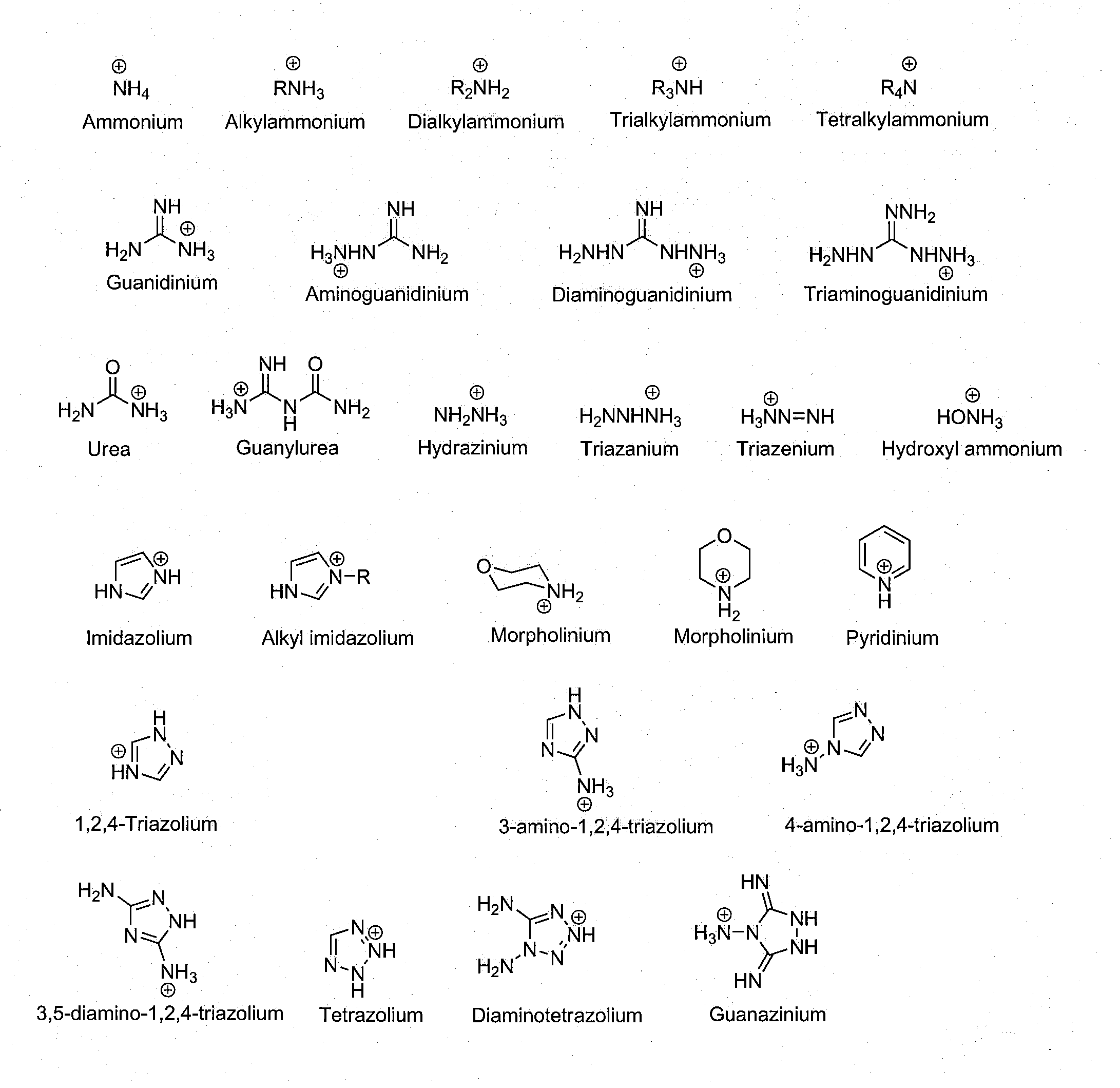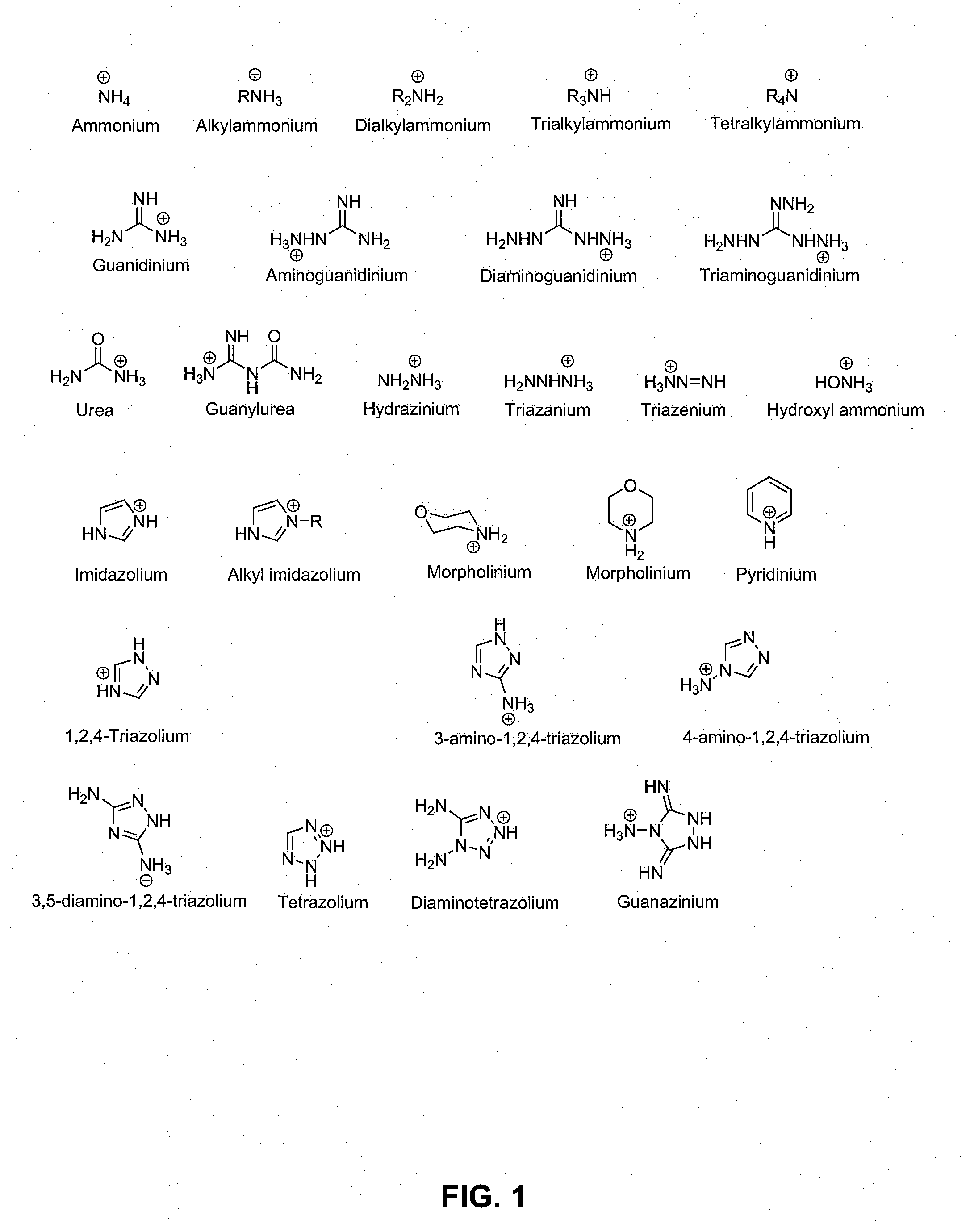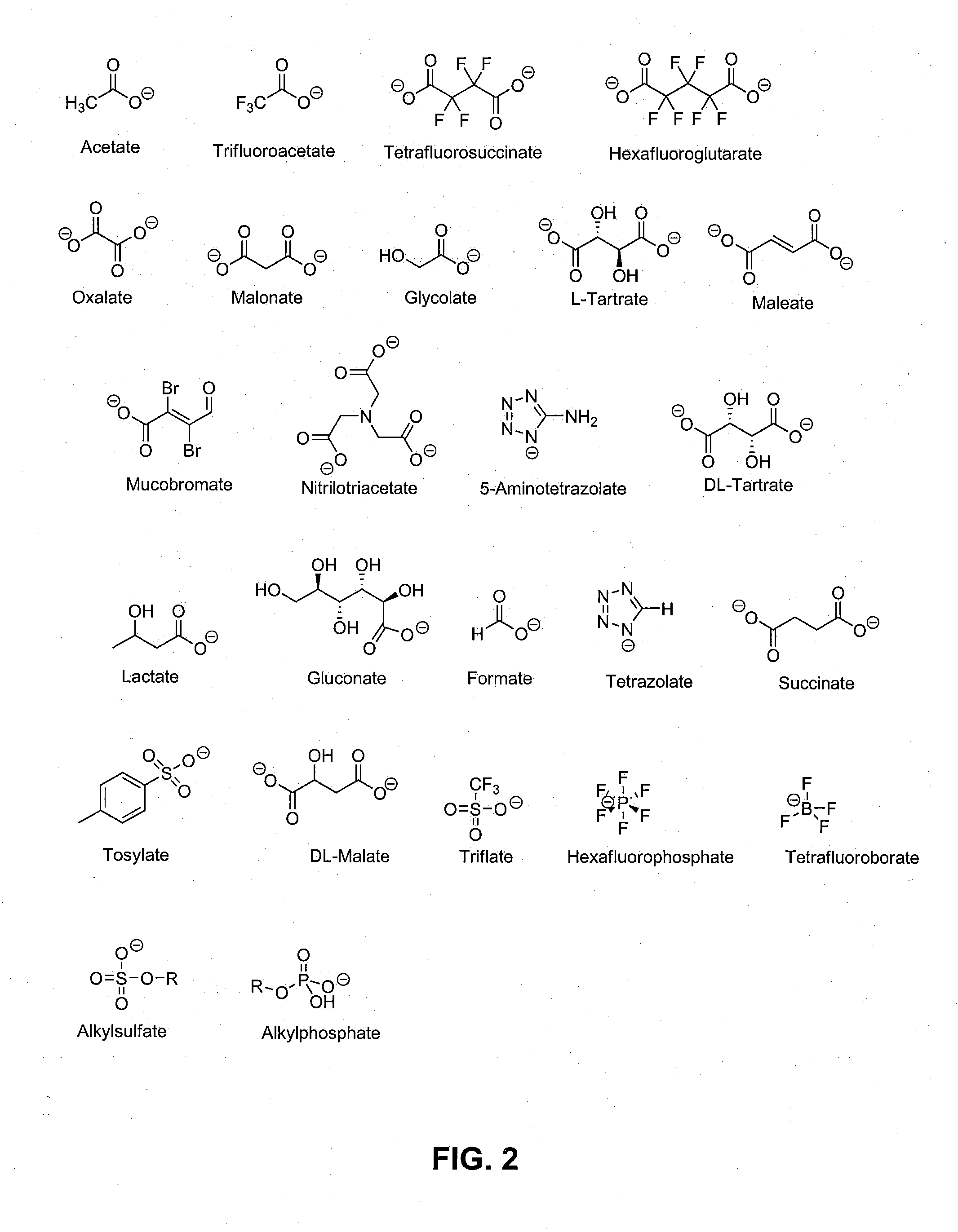Precursor of an explosive composition including at least one ionic liquid and a method of desensitizing an explosive composition
a technology of ionic liquid and explosive composition, applied in the field of ionic liquid, can solve problems such as unsuitability for use in energetic materials
- Summary
- Abstract
- Description
- Claims
- Application Information
AI Technical Summary
Problems solved by technology
Method used
Image
Examples
example 1
Synthesis of AG Glycolate
[0040]Glycolic acid (253.2 g, 3.34 mol) was weighed into a 2-liter beaker and dissolved in 1500 ml of distilled water with stirring. Aminoguanidine bicarbonate (454.8 g, 3.34 mol) was added to the beaker in portions with stirring to avoid bubbling over the sides of the beaker due to the evolution of carbon dioxide. The reaction was stirred at room temperature overnight (approximately 24 hours) at which time all of the solids had dissolved. The water was removed from the reaction mixture in vacuo with heating to approximately 90° C. for 4 hours. The product was recovered as a crystalline white solid.
example 2
Synthesis of AG 5-AT
[0041]5-aminotetrazole monohydrate (250.0 g, 2.425 mol) was weighed into a 2-liter beaker and dissolved in 1500 ml of distilled water with stirring. Aminoguanidine bicarbonate (330.1 g, 2.425 mol) was added to the beaker with stirring at room temperature. Carbon dioxide slowly evolved. The reaction was stirred at room temperature for 48 hours, at which time most of the solids had dissolved. The water was removed from the reaction mixture in vacuo with heating to approximately 90° C. for 4 hours. The product was recovered as a crystalline white solid.
[0042]In an alternate synthesis, 5-aminotetrazole (250.0 g, 2.425 mol) was weighed into a 2-liter beaker and dissolved in 1500 ml of distilled water with stirring. Aminoguanidine bicarbonate (330.1 g, 2.425 mol) was added to the beaker with stirring at room temperature. Carbon dioxide slowly evolved. The reaction was stirred at room temperature for 48 hours, at which time most of the solids had dissolved. The water wa...
example 3
Synthesis of AGTFA
[0043]Aminoguanidine bicarbonate (906.2 g, 6.66 mol) was placed in a 4-liter beaker. Trifluoroacetic acid (760.2 g, 6.66 mol) was added in three, roughly equal, increments with stirring after each addition to avoid bubbling over the sides of the beaker due to the evolution of carbon dioxide during the reaction. The beaker was placed in a vacuum oven at 70° C. to promote the reaction until carbon dioxide evolution was no longer observed (approximately 2 hours). The water was removed from the reaction mixture in vacuo with heating to approximately 90° C. for 4 hours. The product was recovered as a crystalline, slightly off-white solid.
[0044]In an alternate synthesis, AGTFA was synthesized by adding trifluoroacetic acid (2.0 ml, 2.96 g, 25.96 mmol) to 50 ml of distilled water in a 250-ml round-bottom flask with stirring. Aminoguanidine bicarbonate (3.53 g, 25.96 mmol) was added at room temperature to the round-bottom flask in portions with stirring as to avoid bubblin...
PUM
 Login to View More
Login to View More Abstract
Description
Claims
Application Information
 Login to View More
Login to View More - R&D
- Intellectual Property
- Life Sciences
- Materials
- Tech Scout
- Unparalleled Data Quality
- Higher Quality Content
- 60% Fewer Hallucinations
Browse by: Latest US Patents, China's latest patents, Technical Efficacy Thesaurus, Application Domain, Technology Topic, Popular Technical Reports.
© 2025 PatSnap. All rights reserved.Legal|Privacy policy|Modern Slavery Act Transparency Statement|Sitemap|About US| Contact US: help@patsnap.com



